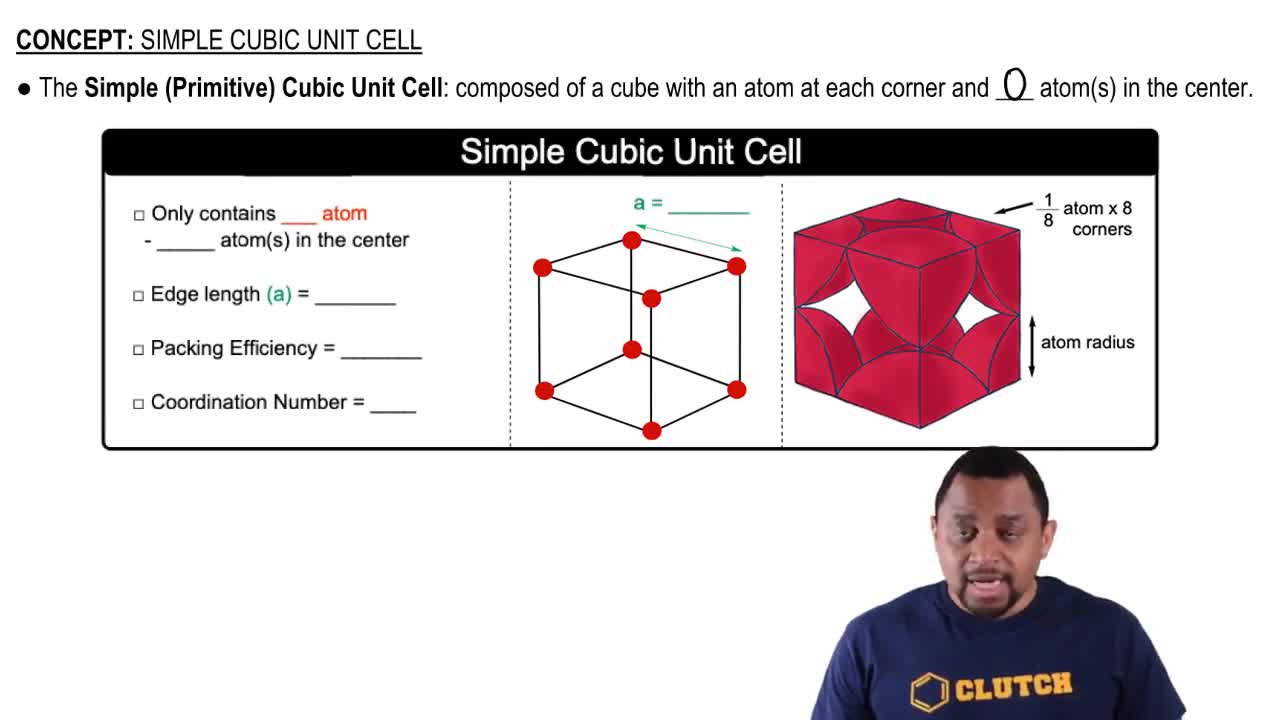Here are the essential concepts you must grasp in order to answer the question correctly.
Density
Density is defined as mass per unit volume, typically expressed in grams per cubic centimeter (g/cm³) for solids. In this context, the density of aluminum (2.699 g/cm³) is crucial for determining the mass of the aluminum atoms in the unit cell, which will help in calculating the edge length of the cubic structure.
Recommended video:
Face-Centered Cubic (FCC) Structure
A face-centered cubic (FCC) structure is a type of crystal lattice where atoms are located at each of the corners and the centers of all the faces of the cube. This arrangement is known for its high packing efficiency, with each unit cell containing four atoms. Understanding this structure is essential for calculating the edge length based on the number of atoms and their arrangement.
Recommended video:
Face Centered Cubic Example
Unit Cell Volume
The unit cell volume is the volume occupied by one repeating unit of a crystal lattice. For a cubic unit cell, the volume can be calculated using the formula V = a³, where 'a' is the edge length. By relating the unit cell volume to the density and the molar mass of aluminum, one can derive the edge length in picometers, which is necessary for solving the given problem.
Recommended video:
 Verified step by step guidance
Verified step by step guidance


